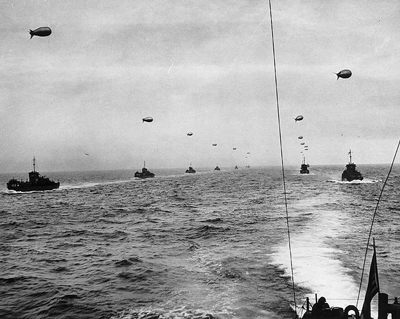
WWII: Maginot Line | Normandy | V-Weapon Sites | Arnhem
Further afield: Crete
| Home Tracing Military Ancestors Travel Advice CWGC Cemeteries Iron Harvest News Book Reviews Glossary Links Contact Me Normandy Landings:
 
|
Reinforcing the BeachheadBut the problem was not just getting forces onto the enemy coastline. The side that could reinforce their position quickest with more troops, equipment and supplies would win the battle over the course of the following weeks and months. Direct disembarkation from landing ships onto the beach was an incredibly slow method of supply and the early capture of a fully working port was the obvious solution. Yet, from their experience at Dieppe, the British knew that any frontal assault against a heavily defended enemy port would result in unacceptably high casualties to the attacking force. It was hoped that the early capture of Cherbourg would help address the supply problem, but the sheer scale of material required in the days immediately following D-Day to secure the beachhead meant that there was only one option – if the Allies could not capture a port, they would have to take one with them. Spurred on by a directive from Winston Churchill no less, the British constructed two huge harbours – each as big as Dover. One for the Americans to be assembled at Omaha Beach, a second for the British and Canadian build-up at Arromanches. The task was staggering in its size and complexity. Each harbour was made up of a number of major components, each with a different task and codename and all would have to be towed across the English Channel before being sunk or anchored into position. For the breakwaters alone, the 147 caissons, code-named PHOENIX, took 22,000 men, 660,000 tons of concrete and 31,000 tons of steel to build. Arromanches was also to be the location of the French end of the Pipe-Line Under the Ocean or PLUTO, designed to pump fuel direct from Great Britain to keep the tanks and vehicles moving. The Fleet Sails As May 1944 approached, all the meticulous preparations began to come to a head of activity. On 8th May, SHAEF selected 5th June as D-Day when tidal and lunar conditions would be at their optimum and on 23rd May the camps containing the assault troops were sealed with barbed wire to prevent details of the timing and objectives of the invasion being leaked. Of course, the final decision on when to go was General Eisenhower’s and in an evening conference on Saturday 3rd June, his meteorological advisor, Group Captain Stagg, gave some dour weather predictions for the next few days. This caused Eisenhower to postpone the invasion for 24 hours – some convoys already at sea were forced to turn back. By the afternoon of 4th June, however, forecasters began to see a small break in the low-pressure fronts coming in from the Atlantic. The final conference on the morning of Monday 5th June at 0415 hours confirmed the predictions and Stagg advised that there would be considerable fair and fine weather during Tuesday 6th and Wednesday 7th June. The Supreme Commander realised that not to go now would mean a wait of three weeks before the conditions were again favourable. The decision was his and his alone. He gave the final order, “OK, we’ll go”. By nightfall on 5th June over 4,000 warships, landing craft and auxiliary vessels carrying over 150,000 men of the assault divisions were underway from ports right across the south coast of Great Britain. In the skies overhead the three airborne divisions headed for their destinations in a vast air fleet comprising over 1,500 transport and tug aircraft and gliders. To their numbers were soon added over 8,000 fighter and bomber aircraft. And all this huge enterprise of men and material was heading in one direction - south to Normandy.
|
